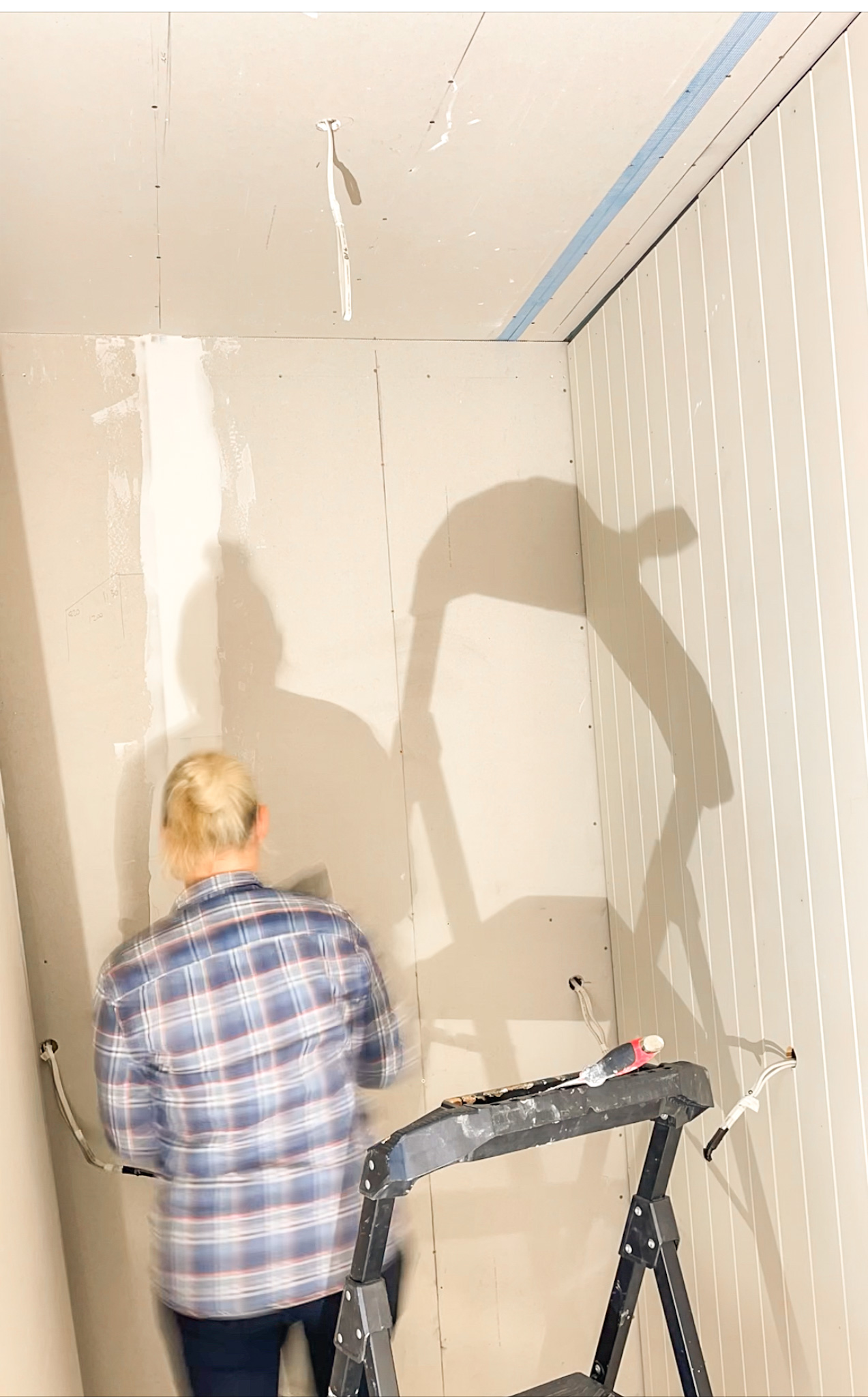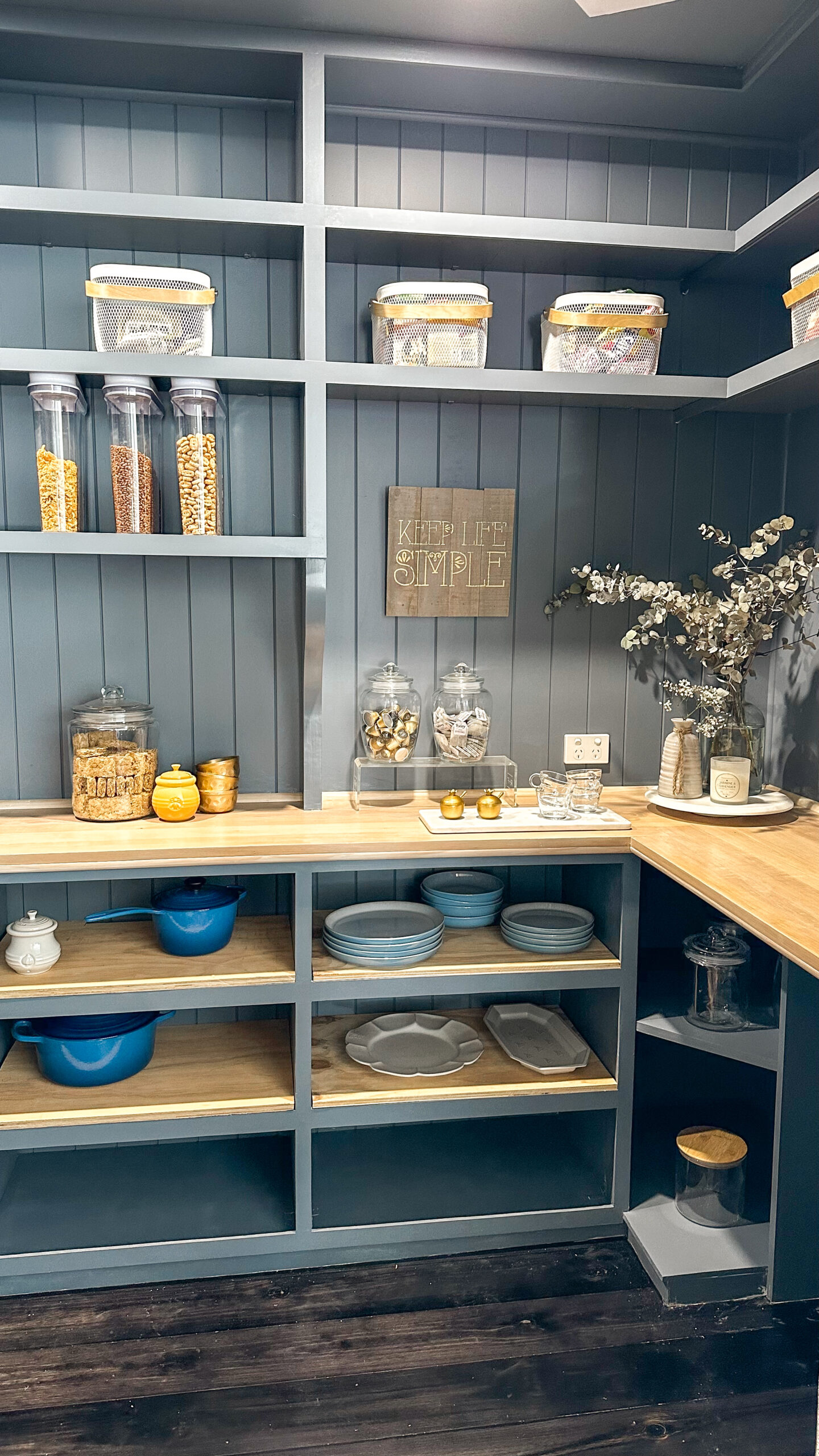DIY Kitchen Pantry Design and Build
Looking for a way to add a custom pocket door to your home? Read on for our step by step guide.
"I'm going to make everything around me beautiful - that will be my life." - Elsie de Wolfe
We started renovating our home 2 years ago and as most of you can probably appreciate when you’re doing most of the work yourselves then things move at a snails pace.
We are still yet to build our kitchen, we have a sink and a stove but that’s a project for another day. In the meantime we decided to design and build our new walk in pantry.
We redesigned the original sleep out and added a walk in pantry off, what will be, the new kitchen. I want a clean kitchen and designed the pantry to hold all of the dry food, small appliances and utility storage.
Materials
- Ply Wood
- Dulux Wash and Wear
- Dulux Renovation Range
- FJ Pine
Tools
- Nail Gun
- Measuring Tape
- Planer
- Circular saw
- Jigsaw
- Orbital Sander

We used VJ sheet on the back wall of the pantry and giprock on the ceiling and remaining walls. Once we had them installed we tape and plastered the giprock and filled the nail and screw holes.
Once sanded I colour drenched the room using Dulux Wash and Wear in Press Agent.

Derek and I build the pantry shelves and the base box out of plywood, we plan to add drawers as a phase two but the base shelves will work for now.


We added timber trim to the face of the shelves to strengthen the shelves and make the look more custom. We also added LED flexible tape lights behind the cornice and trim for ambient lighting.
As the Air fryer and kettle will be in the pantry we added an extractor fan and LED recessed lights


The counter top is made out of VJ’s that came out of our original kitchen. Derek planed and cut them down and we sanded and stained them using Feast Watson Liming White stain and Varnish.

The Door
We built the door using left over hoop pine flooring and VJ panes. Derek constructed a frame using ripped down hoop pine flooring and nailed it together.
- We laid a VJ panel on the floor with the VJ’s facing down.
- We attached the frame to the VJ panel using liquid nails.
- We applied liquid nails to the top of the frame and placed another full VJ panel onto the frame VJ side up.
- We then nailed the board to the frame, flipped it over and nailed the otherside.
- The nail holes were filled with wood fill.
We framed in the opening, taking it as wide and high as we could and framed in one side of the pocket door.
The hardware was installed and we hung the door.
We framed in the remaining side sheeted and painted.
Join
Work With Me







0 Comments